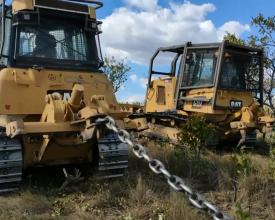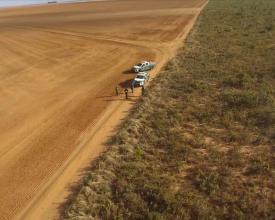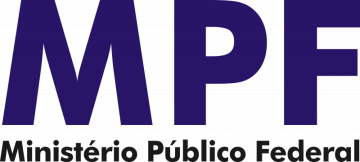
IBAMA'S ENVIRONMENTAL INSPECTION STRATEGY FOR COMBATING DEFORESTATION IN APA SERRA DA TABATINGA-JALAPÃO
The solution proposed in this study is to adopt Ibama's environmental inspection strategies to combat high deforestation rates in the Serra da Tabatinga APA, an important water recharge area in the Parnaíba, Tocantins and São Francisco river basins, which contributes to Cerrado conservation and tourism activities in Jalapão. The inspection action called "Cerrado Legal", carried out by Ibama in 2020 and 2022, aims to monitor, identify and hold accountable the perpetrators of environmental crimes. The impact of the adopted inspection strategy and its effectiveness is reflected in the change of behavior of the offenders, which resulted in a decrease in the deforestation rate and in the pursuit of environmental regularization of rural properties overlapping the APA, highlighting the role of environmental inspection as an essential tool in the protection of the Cerrado.
Context
Challenges addressed
The solution presented faced challenges and problems related to environmental, social and economic aspects:
- The Cerrado faced high rates of deforestation, threatening ecosystems, biodiversity, water recharge and spring formation.
- Deforestation affected the fauna and flora, putting native and endemic species of the Cerrado at risk.
- Deforestation could negatively affect the Tocantins, Parnaíba and São Francisco watersheds, with implications for water supply and climate regulation.
- The preservation of the Cerrado and the containment of deforestation were essential to maintain the way of life and culture of the local quilombola communities.
- The protection of the Cerrado was fundamental to boost tourism in Jalapão, guaranteeing the income and livelihood of local communities that depend on the sector.
- Illegal deforestation could affect agricultural production, putting the economic sustainability of the region at risk.
Location
Process
Summary of the process
The basic components of the solution are inextricably linked to ensure the success of Operation Closed Legal. Effective surveillance and control" is the basis of the operation, identifying and combating environmental crimes. "Participation and engagement of local communities" strengthens the process, actively involving them in monitoring and protecting the territory and contributing valuable local knowledge.
"Partnerships and cooperation" is the link that connects Ibama, the Federal Public Prosecutor's Office and local communities, enabling the exchange of information and resources for the achievement of common goals. Finally, "Data-driven monitoring" quantitatively assesses deforestation and the progress of the operation, supporting decision-making and necessary adjustments.
These blocks complement each other and are implemented in parallel to create an integrated and synergistic approach. The success of the operation depends on the harmonious connection between these elements, reinforcing the effectiveness of the solution and the positive impact on the conservation of the Cerrado and the well-being of local communities.
Building Blocks
Effective compliance and control
The core of the solution was the implementation of a rigorous environmental compliance strategy, with constant monitoring and identification of environmental crimes, such as illegal deforestation and unlicensed activities.
Enabling factors
- Investment in trained personnel, equipment and technology to enable efficient inspection.
- Existence of clear and rigorous environmental laws and regulations to support enforcement actions.
- Empowerment of responsible authorities to apply corrective and punitive measures in cases of environmental infractions.
- Collaboration between different government agencies to share information, resources and enforcement efforts.
- Commitment of society, continuous monitoring and evaluation.
Lesson learned
Key lessons learned in the "Effective Supervision and Control" component:
- Training of inspectors to deal with complex situations.
- Use of technology and updated data for agile inspection.
- Effective communication between teams, institutions and community.
- Integrated approach combining environmental education and conservation.
- Adaptation to changing conditions and challenges.
- Engagement of society as partners and informants.
Advice for replicators:
- Ensure political support to implement effective actions.
- Ensure transparency and accountability.
- Regular monitoring and evaluation to improve impact.
- Collaborate with civil society organizations for additional resources.
- Share best practices to enrich operations and avoid mistakes.
Participation and engagement of local communities
The active participation and protagonism of the quilombola communities were fundamental to the success of the operation, as they became partners in the protection of their own territory.
Enabling factors
- Open and inclusive dialogue between communities and authorities.
- Recognition and valuation of traditional knowledge.
- Empowerment of communities in decision-making.
- Investment in environmental education programs.
- Strengthening of community networks and alliances.
Lesson learned
Main lessons learned in the "Participation and engagement of local communities" block:
- Genuine dialogue and respect for local perspectives strengthens engagement.
- Empowerment creates a sense of responsibility and commitment.
- Valuing traditional knowledge and local culture is essential.
- Networking facilitates the exchange of best practices.
- Environmental education raises awareness and empowers local leaders.
Things that did not work:
- Lack of initial participation generates resistance and lack of support.
Tips for replicators:
- Partner with local leaders and community organizations.
- Adaptability is critical to meet the needs of each community.
- Invest in environmental education to empower communities.
- Seek long-term financial sustainability.
- Constantly monitor results and adjust the project as needed.
Data-driven monitoring
The use of systems such as DETER-Cerrado and MAPBIOMAS made it possible to quantitatively evaluate deforestation and the results of the operation, ensuring greater transparency and efficiency in resource management.
Enabling factors
- Use of advanced remote sensing and geoprocessing systems to collect and analyze accurate and up-to-date data.
- Availability of reliable sources of data on deforestation and environmental crime, allowing for an accurate assessment of the situation.
- Trained professionals to operate and interpret monitoring data, ensuring efficient and adequate analysis.
- Exchange of information between different agencies and institutions for a holistic view of the environmental situation.
Lesson learned
First, the need for specialized and trained teams to manage technologies and data analysis was crucial to ensure monitoring efficiency. The integration of different data sources and the establishment of partnerships with specialized institutions helped to obtain accurate information on deforestation and illegal activities.
Some difficulties were identified, such as obtaining data in real time and the need to improve the interoperability of the systems used for monitoring. Hence the importance of investing in more advanced technologies and infrastructure for efficient information sharing.
For the replicators, the advice is to seek continuous training for the professionals involved and to establish solid partnerships with research organizations and institutions specialized in remote sensing and geoprocessing. In addition, prioritizing transparency and effective communication of monitoring results is fundamental to ensure the support of society and the accountability of those involved in the protection of the Cerrado.
Partnerships and cooperation
Ibama provided expertise in inspection and monitoring, identification of illegal activities and enforcement of corrective measures. The Federal Public Prosecutor's Office acted as an inspector of the law, ensuring compliance with environmental regulations and seeking criminal and civil accountability for infractions and crimes committed. The local communities, in turn, provided local knowledge, active participation in monitoring and protecting the territory, and an essential partnership for the success of the operation.
Enabling factors
To enable the success of the "Partnerships and Cooperation" block, the following conditions are important: open and transparent communication between partners, establishment of shared goals and objectives, clear definition of roles and responsibilities, mutual commitment and alignment of interests, mutual respect and valuing the contributions of each party involved.
Lesson learned
Main lessons learned in the implementation of the "Partnerships and Cooperation" block: 1) Effective communication is fundamental to align expectations and objectives. 2) Respecting and valuing local knowledge of communities is fundamental to engagement. 3) Clearly defining the responsibilities of each partner ensures cohesive action. 4) Maintaining a continuous and open dialogue helps to overcome challenges. Tips for replicators: Avoid lack of transparency in actions, ensure community inclusion and representation, and establish conflict resolution channels to strengthen partnerships and maximize results.
Impacts
Operation Cerrado Legal, carried out by Ibama, reduced illegal deforestation and environmental crimes in the Serra da Tabatinga APA, contributing to the conservation of the Cerrado, the Tocantins, Parnaíba and São Francisco watersheds, and the formation of springs. Effective implementation preserved biodiversity, benefiting tourism in Jalapão and quilombola communities. It also promoted economic sustainability by strengthening ecotourism and legal agricultural production. Data from DETER-Cerrado and MAPBIOMAS showed a reduction in deforestation alerts in the region, evidencing the success of the operation. The Ibama initiative was highlighted as essential for the protection of the Cerrado and the effective management of natural resources in the area and in other regions of the Cerrado biome. With these results, Operation Cerrado Legal reaffirmed its importance in the preservation of ecosystems, the quality of life of local communities and sustainable development.
Beneficiaries
The beneficiaries of the solution were the local communities of the Jalapão region (including the quilombolas), the farmers, all the tourist industries in the region.
Sustainable Development Goals
Story

A few years ago, the quilombola communities of the MATOPIBA region lived a challenging scenario. Illegal deforestation threatened their homes, culture and ancestral way of life, as well as a source of income related to community tourism developed in the Jalapão region. The springs were in danger of drying up and there was a constant fear of losing connection to the land and natural resources.
It was in this context that the idea of Operation Legal Dated arose, a courageous and hopeful initiative of Ibama. With the support and participation of the communities themselves, the project took shape. The environmental inspection strategy was designed to combat deforestation and environmental crimes, preserving the Cerrado and its vital functions for the region.
The changes began to be noticed by the quilombola communities. The presence of the State with inspection and environmental control actions brought greater tranquility to the communities. The protection of native vegetation in the recharge zone of important springs for the region ensured the maintenance of sustainable tourism, which brought new income opportunities for the local inhabitants. Agricultural production in the region has also become more responsible and aligned with environmental preservation.
The leadership of the communities in the process of implementing the solution was fundamental to the success of Operativo Cerrado Legal. They became guardians of their own territory, working side by side with the authorities to protect the nature they loved so much.
The story of this inspiring solution is marked by the unity, determination and resilience of the quilombola communities and Ibama, who together faced the challenges and transformed the reality of the region. The communities continue to live in harmony with nature, proud of their roots and knowing that their struggle has helped preserve the Cerrado for future generations. This story is a powerful example of how protecting the environment can be a path to prosperity and a connection to our own history and identity.




